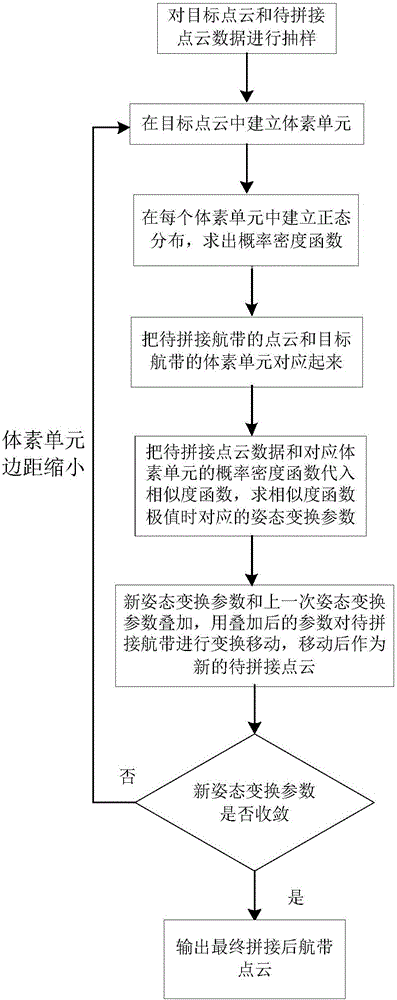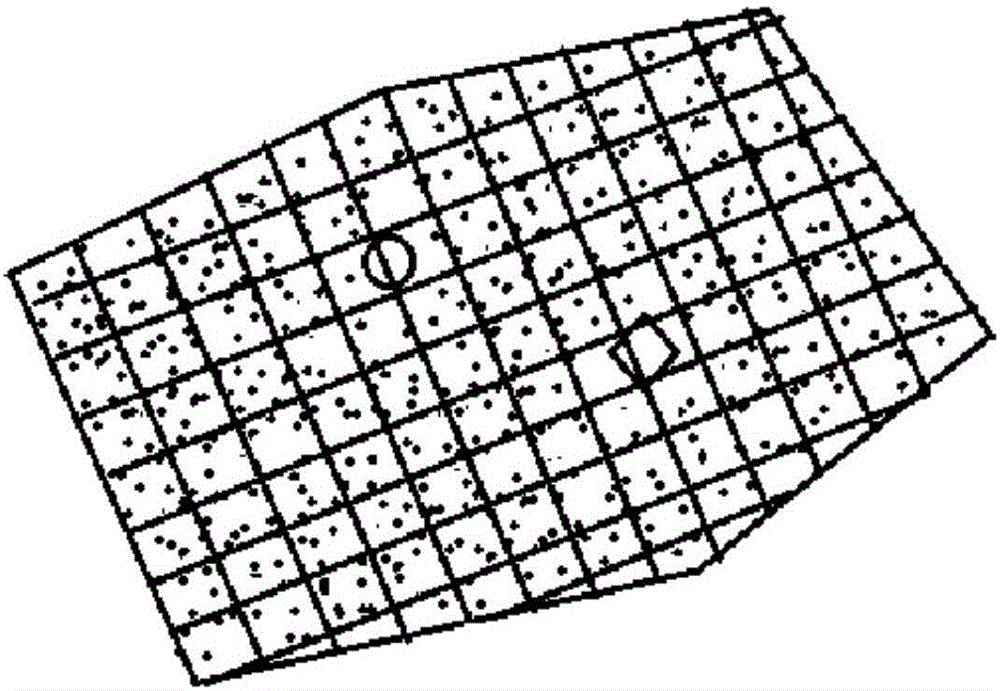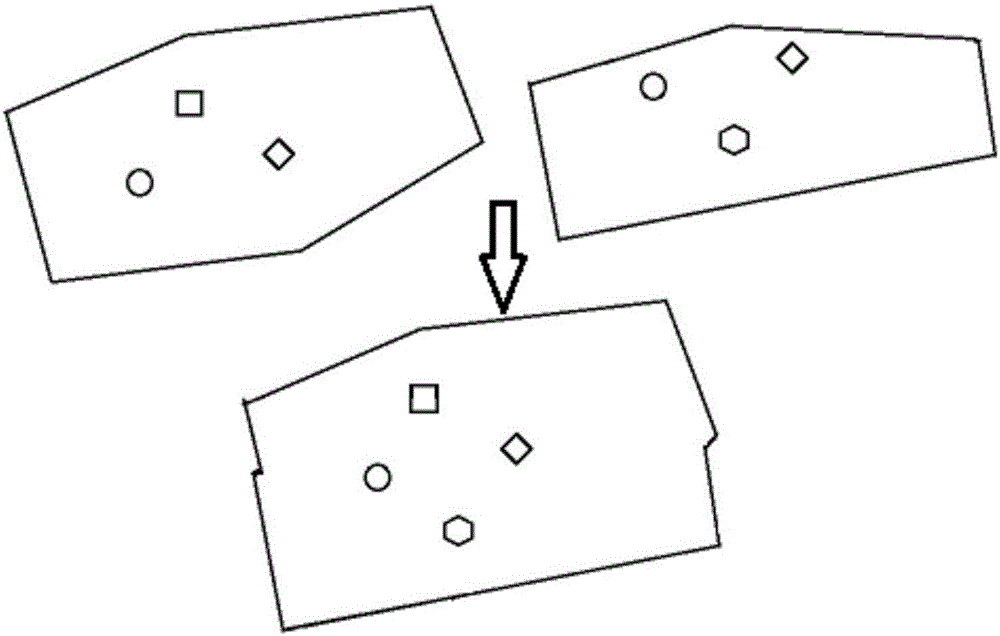Method and device for splicing strip of airborne laser scanning system
An airborne laser scanning and flight belt technology, applied in special data processing applications, instruments, electrical digital data processing, etc., can solve problems affecting point clouds, spatial drift, and absolute accuracy of three-dimensional coordinates
- Summary
- Abstract
- Description
- Claims
- Application Information
AI Technical Summary
Problems solved by technology
Method used
Image
Examples
Embodiment 1
[0069] In this embodiment, self-developed airborne laser scanning hardware system and ground station software are used. The hardware part includes the UAV airborne platform, laser scanner, differential GPS system, and inertial navigation unit (IMU). The scanning system first obtains the position information between the point cloud and the scanner, and then jointly calculates the 3D point cloud of the surrounding environment, that is, the 3D coordinates of the space environment ( x, y, z), the point cloud data is finally saved in the standard LAS format point cloud storage file.
[0070] The software part, that is, the ground station part, transmits these data packets to the data layer of the ground station through the UDP protocol. The data layer first performs the "seventeenth order Kalman" filter on the received original data, and then performs data calculation, which can be obtained Accurate point cloud data. After the ground station receives the data and calculates the p...
Embodiment 2
[0131] like Figure 8 as shown, Figure 8 It is a structural block diagram of the flight belt splicing device of the airborne laser scanning system in the second embodiment. It can be seen that this embodiment discloses a flight belt splicing device of the airborne laser scanning system, which has the following modules: parameter initialization module, voxel unit Division module, normal distribution establishment module, voxel unit correspondence module, attitude transformation parameter solution module, point cloud set space movement module
[0132] Among them, the parameter initialization module 801 is used to perform sampling and filtering on the target point cloud data and the point cloud data to be spliced to obtain the sampled target point cloud set and the collection of point clouds to be spliced X = { x → 1 , ... , x ...
PUM
 Login to View More
Login to View More Abstract
Description
Claims
Application Information
 Login to View More
Login to View More - R&D
- Intellectual Property
- Life Sciences
- Materials
- Tech Scout
- Unparalleled Data Quality
- Higher Quality Content
- 60% Fewer Hallucinations
Browse by: Latest US Patents, China's latest patents, Technical Efficacy Thesaurus, Application Domain, Technology Topic, Popular Technical Reports.
© 2025 PatSnap. All rights reserved.Legal|Privacy policy|Modern Slavery Act Transparency Statement|Sitemap|About US| Contact US: help@patsnap.com



